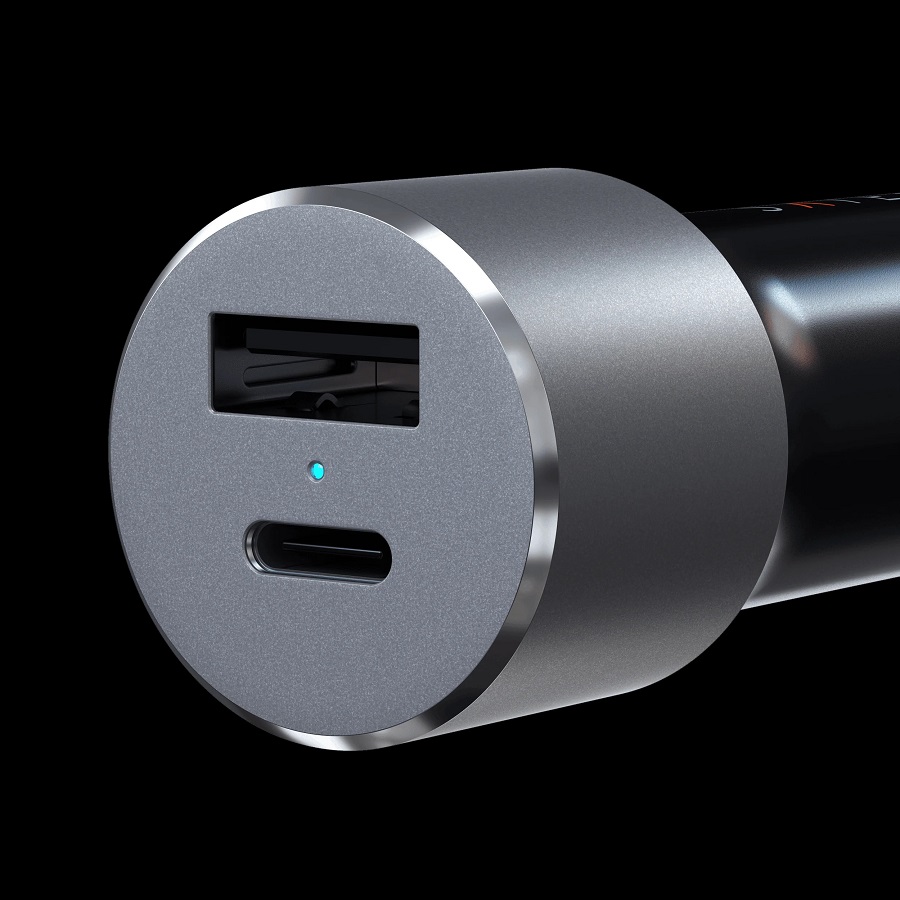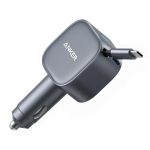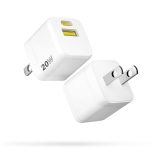Evolution of USB Chargers
With the introduction of the USB Type C chargers, the game changed entirely. This innovation brought a reversible connector design. No more fumbling to plug in your cable correctly. The size got smaller too, making these chargers more portable. These chargers support the USB Power Delivery (PD) standard, which enables them to charge devices more quickly and efficiently than ever before.
Another leap forward was the integration of increased power capabilities. Early USB chargers typically offered 2.5 watts of power, but USB Type C chargers have raised the bar, providing up to 100 watts. This means they can charge not just smartphones and tablets but also power-demanding laptops and other electronics.
Through these stages, we have seen a significant evolution in USB charging technology. Each step has aimed to improve speed, efficiency, and user convenience. The journey from the USB 1.0 era to our current USB Type C charger landscape clearly shows a trend towards more power and greater versatility in a smaller, more refined package.
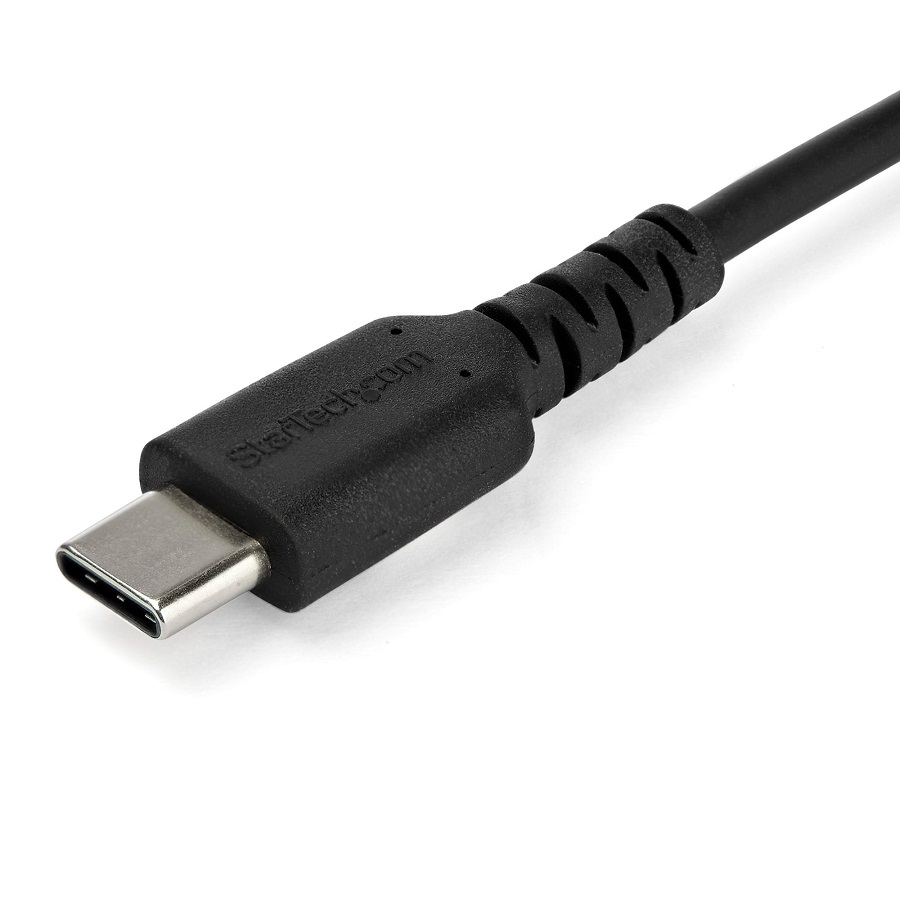
Advantages of USB Type C Chargers
The USB Type C charger brings many benefits to users. One of its key advantages is the reversible connector design. This feature eliminates the frustration and time wasted trying to connect cables the right way.
Another significant benefit is its support for USB Power Delivery (PD). USB PD allows for fast charging of numerous devices. This means phones, tablets, and laptops can charge much quicker compared to older USB types.
USB Type C chargers are also compact and portable. Their small size makes them convenient for travel and use in various locations.
Compatibility with a wide range of devices is yet another plus. USB Type C is the standard for many new gadgets. Users need just one charger for all their USB-C compatible devices.
Last but not least, USB Type C chargers can carry more power. They deliver up to 100 watts. High power capacity lets users charge even the most demanding electronics with ease.
Overall, USB Type C chargers offer reversible design, fast charging through USB PD, portability, wide compatibility, and high power delivery. These features combine to provide a superior charging experience for all kinds of electronic devices.
How USB Type C Delivers Faster Charging
USB Type C chargers have revolutionized the charging process by providing faster charging speeds. This is primarily due to two key innovations. First is the integration of USB Power Delivery (PD) technology. USB PD is a fast charging protocol that negotiates power delivery over a USB connection. It enables devices to charge at the fastest speed they safely can handle, up to 100 watts. This means a device can go from zero to 50% charge in just minutes rather than hours.
The second driver behind the faster charging is the increased number of pins in the USB Type C connector. Unlike its predecessors, a USB Type C charger has 24 pins. This design supports higher power flows and allows for faster data transfer rates. More power can be transferred safely, which translates into quicker charging times.
Furthermore, USB Type C supports bi-directional charging. This means that a device can either send or receive power. Consequently, the same charger could be used to charge your laptop and then reverse the flow to charge your phone from the laptop’s battery.
Here’s how USB Type C delivers faster charging:
- Uses USB Power Delivery (PD) for optimal charging speeds.
- Features 24 pins to support higher power flow.
- Allows for bi-directional power, adding to versatility.
The combined effect of these innovations means that users can enjoy not only rapid charging but also a more convenient, versatile charging solution suitable for a multitude of devices. As more electronics adopt the USB Type C standard, the benefits of these fast charging capabilities will become even more widespread.
Key Features to Look for in a USB Type C Charger
When choosing a USB Type C charger, certain features stand out. Look for these to make sure you get the best charging experience.
- Power Output: USB Type C chargers offer up to 100 watts. Pick one with the power output that meets your device’s requirements.
- USB Power Delivery (PD) Support: Ensure the charger has USB PD. This tech allows fast charging for compatible devices.
- Quality of Build: A well-built charger lasts longer. Choose chargers with robust construction and quality materials.
- Certifications: Look for safety certifications. These confirm the charger meets industry safety standards.
- Cable Quality: A high-quality cable is a must. It should handle the power delivered without overheating.
- Portability: If you travel, get a charger that is compact and easy to carry.
- Warranty: A warranty can safeguard your investment. Go for chargers with a reliable warranty.
- Brand Reputation: Trustworthy brands often provide better customer support and reliability.
Check for these key features when shopping for a USB Type C charger. They ensure fast, safe, and efficient charging for your devices.
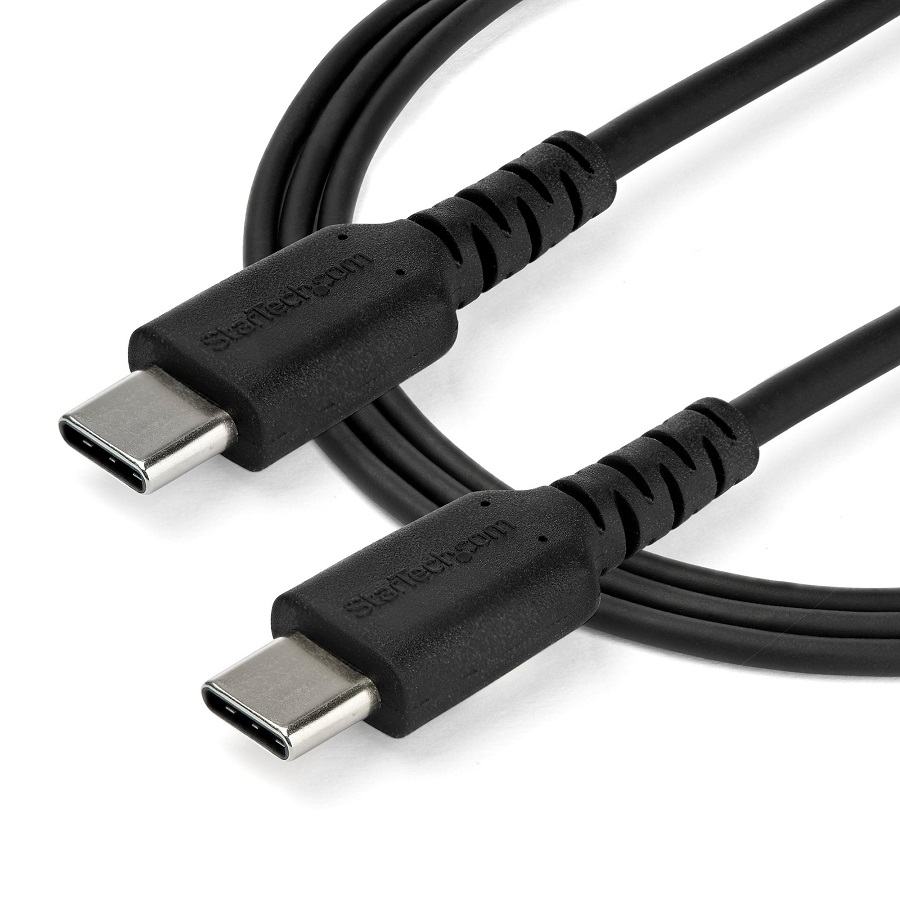
Safety Protocols and Certification for USB Type C Chargers
Safety is paramount when it comes to any electrical device, and USB Type C chargers are no exception. Manufacturers must follow strict protocols to ensure their chargers won’t cause harm to users or damage devices. Here’s what you should know about the safety features and certifications of USB Type C chargers.
- Overcurrent Protection: This feature prevents too much current from flowing through, which could damage the device.
- Overvoltage Protection: Protects your device from receiving too much voltage that could lead to malfunctions or permanent damage.
- Short Circuit Protection: Shields devices from the dangers of short-circuiting, a common cause of electronic failure.
- Temperature Control: Ensures the charger does not overheat, which could pose a risk of burns or even fire.
- Certifications: Look for marks such as CE, UL, or ETL which indicate that the charger has been tested for safety standards.
- USB-IF Certification: The USB Implementers Forum offers a certification to validate that a USB Type C charger adheres to standards for interoperability, performance, and compliance.
In addition to looking for these safety features and certifications, always use the charger that comes with your device or one from a reputable manufacturer. When buying a new charger, avoid deals that seem too good to be true as they might compromise on safety features for lower cost. By choosing a charger that meets safety protocols and holds proper certifications, you can charge with confidence, knowing that you and your devices are protected.
The Future of Charging: What’s Next for USB Type C?
As USB Type C chargers continue to evolve, the future looks promising and is likely to bring even more advances in charging technology. We can anticipate several key developments that could shape how we power up our devices in the coming years.
- Increased Power Delivery: While current USB Type C chargers offer up to 100 watts, future chargers may exceed this limit. This will enable even faster charging times and support a wider range of power-hungry devices.
- Enhanced Data Transfer Speeds: The evolution of USB technology may also lead to faster data transfer speeds. This could improve efficiency for activities requiring large data transfers, such as video editing or software updates.
- Greater Device Integration: As the USB Type C standard becomes more prevalent, we can expect increased integration across devices. Chargers could soon power a broader array of electronics, further centralizing and simplifying our charging needs.
- Wireless Charging Capabilities: The integration of wireless charging with USB Type C may emerge. It would allow a seamless transition between wired and wireless charging without sacrificing the fast charging benefits USB PD offers.
- Eco-Friendly Solutions: In response to environmental concerns, future USB Type C chargers could feature sustainable materials. Innovations in production might minimize waste and maximize charger longevity.
- Smart Charging Technology: Advancements in smart technology could lead to chargers that intelligently adapt to each device’s needs, protecting battery health and optimizing charging efficiency.
These potential developments not only promise to enhance the charging experience but also indicate the continuous commitment to innovation in the field of USB charging technology. Keep an eye out for these exciting advancements that will define the future of USB Type C charging.

Comparing USB Type C Chargers with Other Technologies
When examining USB Type C chargers versus other technologies, several differences become clear.
Traditional USB Chargers
Traditional USB chargers, such as those for USB-A and USB-B connections, often have slower charging capabilities. They provide less power, typically around 2.5 to 5 watts, making them unsuitable for larger devices like laptops. The connectors are also not reversible, which can lead to the frustrating experience of trying to plug in a cable the wrong way.
Micro-USB Chargers
Micro-USB chargers, widely used before USB Type C gained popularity, offer more portability than older USB chargers but still lag in power delivery. They generally max out at around 15 watts. They do not support USB PD and the smaller connector is not as robust as the USB Type C.
Lightning Connectors
Primarily used by Apple devices, Lightning connectors are similar to USB Type C in their reversible design. However, they are proprietary and not as universally adopted. Although they support fast charging, they don’t offer the same power output or versatility as USB Type C chargers.
Wireless Charging Technologies
Wireless charging provides convenience by removing physical cables. Yet, it typically charges more slowly than wired connections and can be less efficient. The power transfer rate of wireless chargers is often lower, and they usually cannot charge multiple devices simultaneously.
USB Type C chargers emerge as a robust solution amidst these alternative technologies due to their higher power capacity, reversible design, and widespread compatibility. They balance speed, efficiency, and convenience, potentially replacing other forms of charging in both personal and professional settings.
Tips for Optimizing the Life of Your USB Type C Charger
To get the most out of your USB Type C charger, consider these practical tips:
- Avoid Rough Handling: Yanking out the charger can harm both the cable and port. Gently plug and unplug your charger.
- Store Properly: When not in use, keep your charger in a cool, dry place. Avoid exposing it to extreme temperatures.
- Cable Management: Prevent tangles by coiling the cable neatly. Use a strap to keep it organized.
- Regular Inspections: Check for frays or damage regularly. Replace the cable if you spot any issues to prevent further harm.
- Use Manufacturer Cables: Though third-party cables may be cheaper, the ones provided by the device manufacturer are usually more reliable and safer.
- Keep It Clean: Dust and debris can accumulate in the port. Use a can of compressed air to clear any buildup.
- Avoid Overcharging: Don’t leave devices plugged in for too long after they’re fully charged, as this can strain the battery and charger.
By following these guidelines, you can enhance your USB Type C charger’s life and maintain its fast charging efficiency for a long time.
